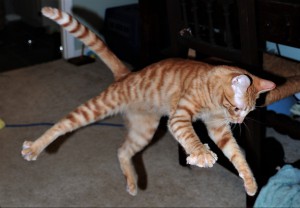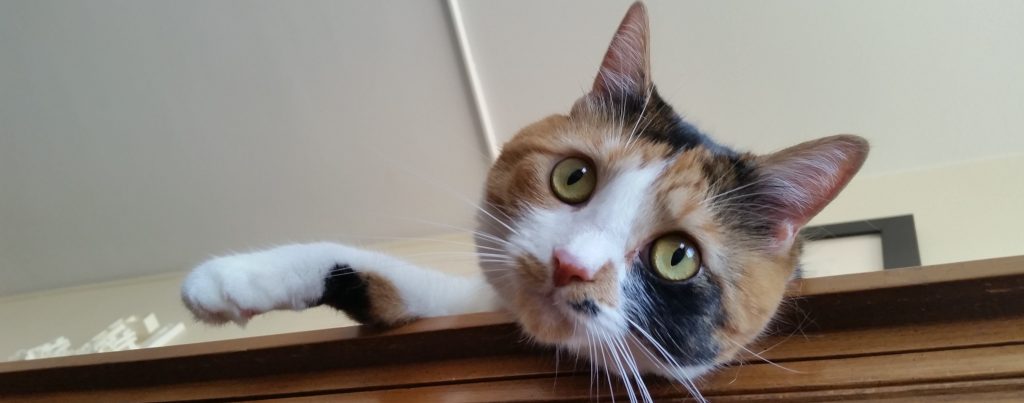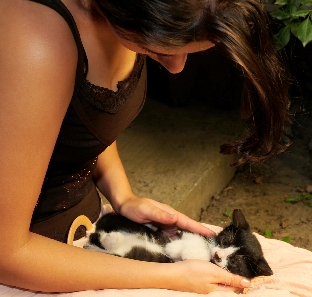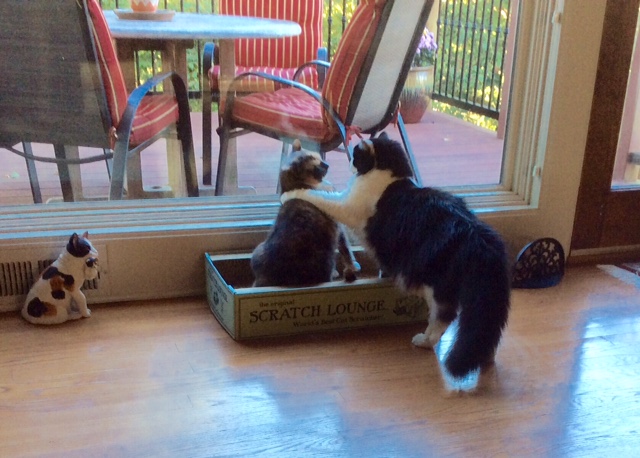 Amy D. Shojai is a certified animal behavior consultant and the award-winning author of 23 pet care books, including “Complete Kitten Care” and “Pet Care in the New Century: Cutting-Edge Medicine for Dogs & Cats.” View more about Amy by clicking here:
Amy D. Shojai is a certified animal behavior consultant and the award-winning author of 23 pet care books, including “Complete Kitten Care” and “Pet Care in the New Century: Cutting-Edge Medicine for Dogs & Cats.” View more about Amy by clicking here:
https://www.thesprucepets.com/amy-shojai-cabc-551736
________________________________________
Cats get the short end of the health care stick. According to the American Veterinary Medical Association, cats visit the vet much less frequently than dogs. It’s not that felines are healthier (although cats do hide illness better) but many cats hate the vet so much their owners find it easier to just skip it. But even healthy cats need well exams once or twice a year.
Cats are adept at protecting themselves from stranger danger. What’s familiar is safe, while anything new or different raises kitty suspicions. A vet visit delivers a triple whammy by changing the cat’s routine, environment and exposure to strangers. Here are seven reasons cats hate the vet and how you can ease the angst.
Negative Crate Expectations. Cats learn very quickly to recognize cause and effect. The appearance of the cat carrier prompts kitty disappearing acts if used only for vet visits. Make the carrier part of the furniture and add a fuzzy bed or catnip toys inside to create a pleasant association.
Claustrophobic Car Rides. Though humans can look out windows and know what’s happening, the cat’s-eye view from the carrier offers movement without warning. Odd sounds and being in a strange environment raise cat blood pressure and might even prompt motion sickness. Covering the view with a towel over the carrier’s door helps some cats. But simply taking Kitty for many short rides around the neighborhood (and never going to the vet!) followed by treats or games can diminish nerves.
Scary Smells. Cats experience much of life through their noses. The array of unfamiliar smells found in a hospital — antiseptic, strangers, other animal’s fear — can ramp up the kitty fright factor. A pheromone product like Comfort Zone with Feliway that can be spritzed on a towel inside the carrier can help soothe environmental stress.
Strange Pets. Nothing turns felines into hiss-terical claw monsters like barking dogs or meowing cats. When confined inside a carrier, your frightened cat can’t flee, so the fight-or-flight instinct has no outlet. She may redirect her fear aggression on the nearest target — you or the vet staff. Ask to schedule your cat’s exam early in the morning or at slow times to avoid a busy waiting room. Some vet practices have separate waiting rooms and entrances for cats and dogs, so at least your cat never has to see or hear the mortal enemy.
Cold Exam Tables. Though cats may hate getting into their carriers, being dumped on a cold metal table elevates the “strangeness” of the experience significantly. After all, Kitty-Boy’s preferred lounging spots are the windowsill with a view, the soft top of the sofa, or a table underneath a warm lamp. Take along a towel or even the cat’s bed that smells like your cat to make the exam table more feline friendly. Some cat specialty practices have exam room windows with bird feeders outside or water fountains and fish tanks for kitty distraction.
Weird People Doing Weird Things. The vet and clinic staff love animals, but to your cat they’re from Mars. Maybe they wear uniforms and smell like dogs (spit!) and don’t ask permission to stroke his fur. A particular stressor is being handled by several people — the vet tech for getting a temperature or stool sample, for example, and later the veterinarian. Reducing the number of handlers may help. Scheduling enough time so the cat doesn’t feel rushed also can ease the tension.
Painful or Surprising Events. Needle sticks aren’t much fun. And a cold thermometer inserted into the nether regions is no way to make friends. It’s up to owners to offer treats or toys during and immediately after upsetting procedures to help change how cats feel about vet visits.
Cats remember discomfort, fear and bad experiences and expect them in the future. But they also remember good experiences and anticipate accordingly. Ask about taking your kitten for “fun visits” to meet and get used to the vet and staff, so he can simply play and be petted rather than examined and treated. Repeated happy visits take the scary out of the equation. Make vet visits more pleasant, and your cat will be happier — and healthier.



